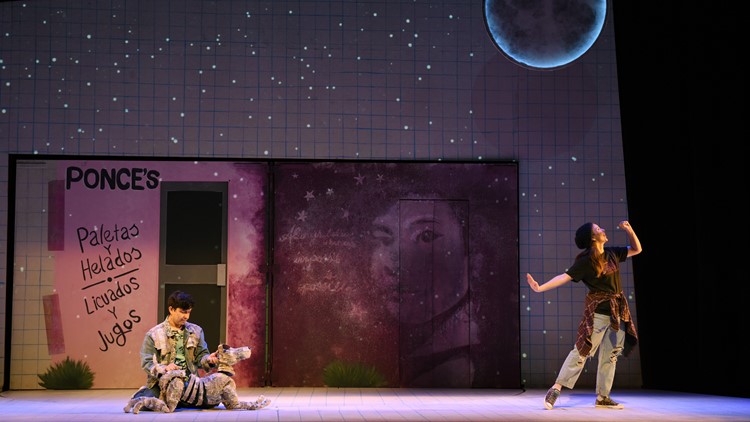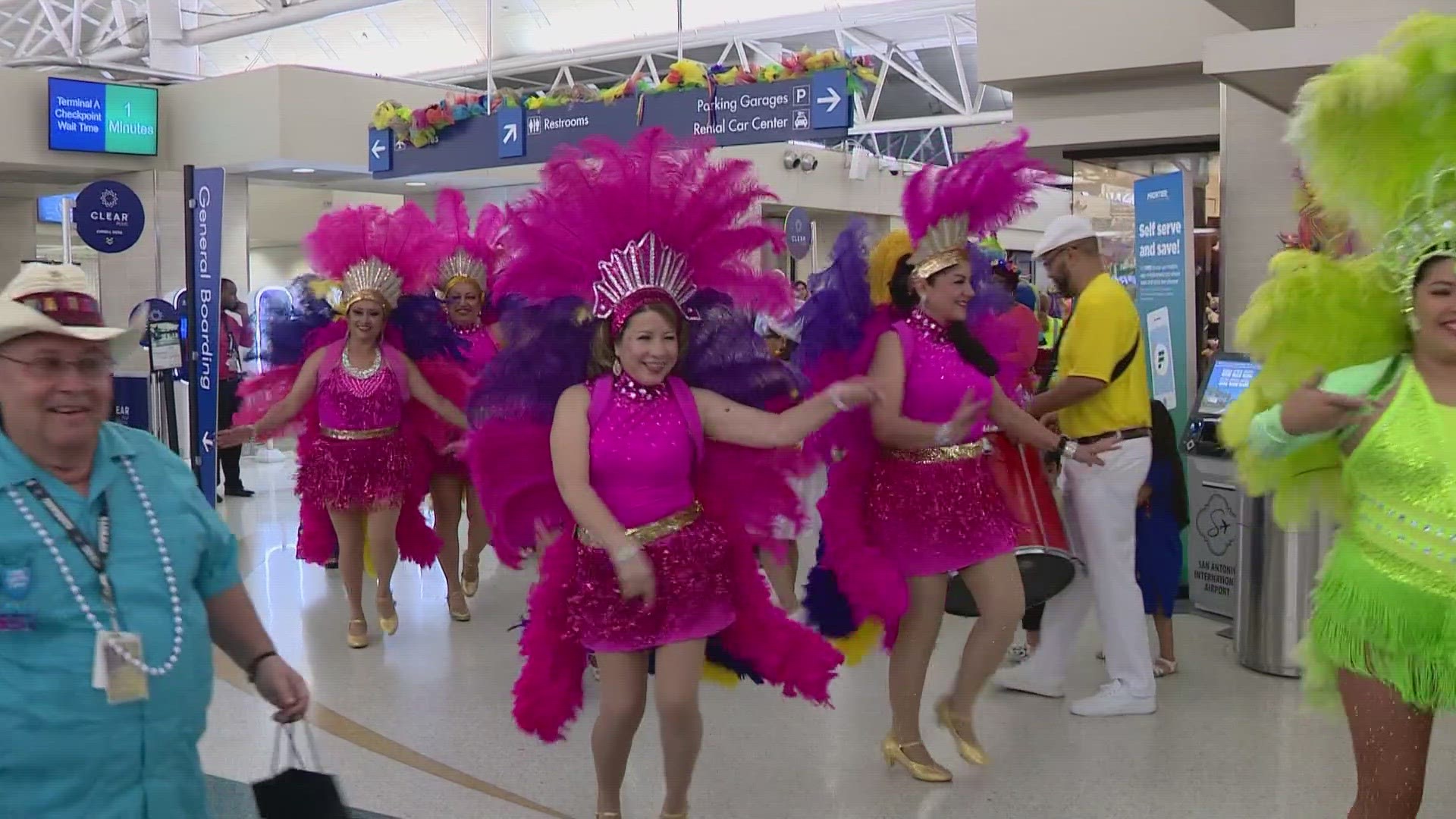SAN ANTONIO — At San Antonio’s Classic Theater, the self-examination began with a frankly worded email sent to loyal patrons last spring. The subject line: “#RealTalk Changing Plans & Changing Minds.”
In it, the theater said it was organizing a one-time, stripped-down version of the previously scheduled George Bernard Shaw comedy “Misalliance,” written a few years before Henry Ford introduced the assembly line. Before that May show – more of an intimate stage reading, held at the San Antonio Botanical Gardens – the audience was asked something most of them likely had never been explicitly asked before a theater production.
They were encouraged to think about why they were laughing or otherwise reacting in a certain way at specific moments, and to consider what kind of privilege the theater space affords audiences watching years or decades-old shows.
“For me, it’s not about when people speak out; it’s about how people speak out. And making sure we’re in a position where we’re able to listen and we’re able to learn,” says Artistic Director Jimmy Moore, who assumed the role at Classic Theater in January.
The cast was a diverse one, and part of the show’s ensuing panel discussion centered on the priority of representation in a modern-day rendition of “Misalliance." Though the show has always been shaded by sociopolitical, gender and ability differences, it hasn't always necessarily cast performers who reflected those characterizations.
When researching Shaw’s background, specifically the playwright’s early support of the Nazi Party and eugenics, Moore felt compelled to take action. Similar to how Public Theater staff – themselves led by a newly hired artistic director – hurried to replace a holiday show that included outdated and culturally incentive material last fall, he felt he couldn’t wait until next season to start a new conversation.
“I just thought, ‘You know what? San Antonio needs this right now. Our company produces classic works, and classic works are always going to be retrospective, because they’ve taken time to become classics.
“But I do believe that classic works are able to bring people of various backgrounds together for a shared experience. And so we are sort of at a crossroads.”
So are other local companies.
Reflecting the variety of life, onstage
As temperatures steadily drop and the curtain rises on September, so too does it rise on a new season for San Antonio’s theater groups—one aligning with a renewed push to tell stories reflective of the community, their histories and their current challenges.
Sometimes, as was the case with the Classic’s stripped-down take on “Misalliance,” that means going straight to the audience for its input, breaking down the fourth wall of live entertainment and encouraging patrons to think deeper about what they’re watching. Even downtown’s Empire Theater – typically a stage for touring comedians and small tribute bands – will host a local production this weekend called "Three Years of Fear," centered around themes of anxiety and mental health, a topic of renewed discussion in the weeks after the Robb Elementary shooting.
Navigating the crossroads not only means looking at old shows through a modern lens as Moore’s team is doing, but finding new shows altogether. At downtown’s younger-skewing Magik Theatre, new stories to produce come from anywhere, including other children’s theaters and the minds of playwrights who pitch directly to them.
“We ask ourselves a lot of questions,” says Anthony Runfola, Magik’s artistic director, about the process of planning a whole season. “We talk all year long about, ‘What should we do?’ and eventually distill that down into five or six plays. But there’s a lot of talking.”
The result of all that talking? Some singing, as it turns out, and a slate of shows reflecting a variety of life experiences. After the season-sparking run of “The Very Hungry Caterpillar Show,” excitement is high for the Texas premiere of “Selena Maria Sings,” an original production inspired by Selena Quintanilla’s legacy told through the lens of a young singer experiencing the loss of a loved one.
Barring a COVID-instigated setback, another story about Latino culture will grace the Magik stage in February—this one inspired by history stretching back thousands of years. “The Hero Twins: Blood Race” touts itself as an “action-filled adventure that is also an allegory about inequality, justice, and liberation,” and inspired by Mayan stories.
The new shows derive from an ethos of creating a lineup not just aimed at entertaining audiences, but at reflecting them too.
That mindset also led Runfola and his team to program “Eddie & Vinnie,” an upcoming show whose young protagonist – like 20% of the population – is dyslexic. Much like how Magik and the San Antonio Food Bank partnered last year to help fight local hunger in collaboration with “Maddi’s Fridge,” “Eddie & Vinnie” is the result of a collaboration with the local advocacy group Celebrate Dyslexia.
“The stories that are being told in the theaters and the arts institutions are not proportionate to the folks that are here,” Runfola said. “That needs to change. And it’s not easy, because on the other side of that you have to invite these communities into your space, because they’ve not been made to feel welcome in the past.”
New eras, enduring challenges
A similar approach is being taken at the Public Theater of San Antonio, where Claudia de Vasco is preparing for her first full season as executive artistic director.
In addition to enlisting guest directors from a variety of backgrounds for this season's varied lineup, the Public's inclusivity initiatives extend to those they welcome to the north-side theater via “relaxed performances” that emphasize comfort and a de-escalation of the strict formality theater spaces are often associated with.
“On these days we're saying, 'Experience theater as you wish,’” de Vasco said. “At professional theaters, there's still sort of this expectation of theater decorum, which I'm also hoping we can get a little bit more relaxed with.”
De Vasco is also spearheading new efforts to empower an Alamo City theater community which she says hasn’t grown in lockstep with other arts organizations over the years.
Teatro Audaz and the brand-new Miscast Theater Company, for example, will participate in a retooled residency program through which the Public Theater will provide practical help but also the financial know-how to keep a company alive. Elsewhere, while the Public previously hired one costume designer for an entire season – a routine de Vasco said was “not humane and not sustainable” – staffing tweaks for 2022 mean each show will have its own dedicated designer attuned to the specificity of each's story.
But innovations have their tradeoffs.
“We were finding it hard to find a huge pool of that talent here,” de Vasco said.
She was able to tap into a national network to find the right artists, including the scene designer for the Public’s first 2022 show, “American Mariachi”; he's a native San Antonian working professionally in his hometown for the first time. De Vasco said the pandemic actually helped deepen the talent pool as costume designers and set creators and performers returned to south Texas, as did millions across the country.
That creates a new challenge: giving them a reason to stay. And retention is a significant hurdle to clear when young lovers of theater grow up dreaming of the bright lights of New York City.
“The thing I keep saying is, 'San Antonio needs to be a place not just where great artists are made, but where great artists can call home.' We’re not quite there yet.”
Which is part of the reason she’s calling on artists from across the country, empowering those with the appropriate skillsets to lead upcoming Public Theater productions of “Nina Simone: Four Women”; the all-new, punk-rock-inflected “Fabulous Monsters”; and, to kick things off, “American Mariachi,” the first-ever show from a Latino playwright put on by the Public.
'A real sea change'
A similarly groundbreaking season is in store at the Classic, where Moore says they’re fine-tuning a quintet of shows that make up “some of the most diverse works we have ever brought to our stage.” He specifically cites August Wilson’s “Fences,” the organization’s first-ever show by a Black playwright, as an example.
“It’s very important that we pick shows that not only allow people of diverse backgrounds to be in classics that were written by white playwrights, but that we also offer classics of each individual culture as well,” Moore said.
At the same time, he concedes that shepherding artistic efforts at a classically focused theater with a more progressive mindset puts the 15-year-old company in uncharted territory.
That sentiment is shared by Stacey Connelly, an associate professor of theater at Trinity University who participated in the May panel discussing the historical contexts of “Misalliance”—and who was struck by how the diverse casting of that one-time show reinforced the timelessness of Shaw’s satire.
“I think the younger generation that is stepping up to lead now is rightfully asking these questions (of inclusivity),” she said. “If we don’t, how are we going to expand our audience?”
Connelly says conversations about the enduring relevance of shows from long-dead playwrights – shows like “Misalliance,” one of the professor’s personal favorites – have been playing out in academic spaces for a few years now.
Sometimes, it happens organically. Connelly describes a day last spring when she took her class to see “Professor Bernhardi,” a decades-old play about identity amid the rise of antisemitism in Nazi Germany, recalling how strongly it resonated with her students through a modern lens.
“They were saying, ‘Oh my gosh, all of these issues that the play brings up is what we’re experiencing now with Black Lives Matter and the extreme right.’ The play really spoke to them.”
“We kind of take them (older playwrights) for granted and we don’t try to help the next generation understand who they were in their time,” she added. “I think there’s a tendency to dismiss them as, ‘Well, they represent forces of oppression that we really need to get away from.’ And I think it’s just false.”
For Connelly, interrogation and contextualization go hand in hand in fueling at least part of what comes next for theatrical creativity. Runfola says the momentum has been building since at least the mid-2010s.
“You’ve seen a real sea change in people noticing, ‘Why is your season written by all-white males, some of them dead for thousands of years?’” Runfola said.
And if momentum has been building for several years, Moore believes it’s received a jolt more recently—one with echoes of accountability and urgency to do more than the status quo.
“People want to see themselves authentically represented on stages,” the Classic’s artistic director says. “I think, right now, all producers everywhere are being asked to answer for systemic issues that have been facing the theater for decades. And people have had enough. People want to have their voices heard.”



